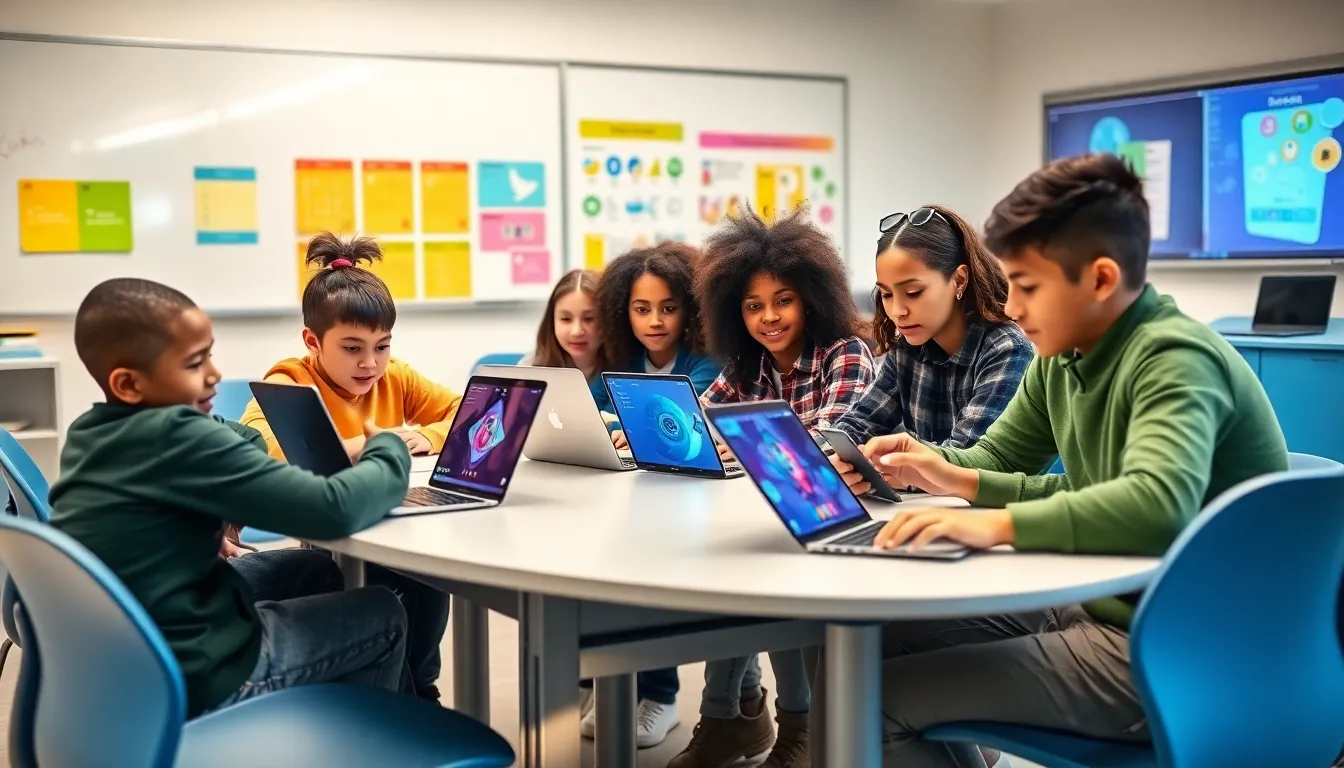In a world where learning can sometimes feel like pulling teeth, EdTech games have emerged as the delightful tooth fairy for students everywhere. Imagine turning algebra into an epic quest or history into a thrilling race against time. Sounds fun, right? That’s the power of educational technology games. Not only do they engage young minds, but they also pack a cognitive punch that traditional teaching methods often miss. Let’s explore how these games are reshaping the learning landscape, making education exciting while sneaking in some serious knowledge.
Table of Contents
ToggleThe Importance of EdTech Games in Modern Education

Engagement and Motivation: How Games Enhance Learning
EdTech games boost student engagement like a triple shot of espresso. These interactive platforms create a space where students are not just passive recipients of information. Instead, they take on active roles, making decisions, solving problems, and feeling the thrill of achievement. This heightened level of engagement can lead to improved attendance and participation in class. With gamified learning, students are more likely to jump into lessons that may have seemed mundane at first.
Cognitive Benefits: Skills Developed Through Gameplay
Beyond just keeping students awake, EdTech games nurture essential cognitive skills. As they navigate through various challenges, students sharpen their problem-solving abilities and reinforce their critical thinking skills. Multiplayer games also foster collaboration, teaching students the importance of teamwork. They learn to strategize, adapt, and innovate, all foundational skills that will serve them well in their future careers.
Types of EdTech Games: Exploring Different Genres
Simulation Games: Real-World Learning Experiences
Simulation games offer students a taste of real-world scenarios without the risks. Whether it’s running a virtual city, managing a farm, or experimenting in a digital lab, these games allow learners to apply theoretical knowledge in practical ways. For example, simulating historical events can help students grasp their complexities in a more engaging manner.
Puzzle and Strategy Games: Critical Thinking Development
On the flip side, puzzle and strategy games ignite critical thinking in extraordinary ways. Students encounter obstacles within these games that require them to analyze information, make decisions, and adjust their strategies. This genre fosters logical reasoning, as players must often work backward from a goal to figure out the necessary steps to achieve it.
Interactive Storytelling: Enhancing Literacy and Creativity
Interactive storytelling takes learning a step further. In these games, the narrative unfolds based on the player’s choices, making each decision meaningful. Such gameplay not only captivates students but also enhances their literacy skills. By engaging with diverse characters and plots, students improve their vocabulary and comprehension while unleashing their creativity. Writing becomes a fun, immersive experience rather than a chore.
Integrating EdTech Games into the Curriculum
Assessing Effectiveness: Measuring Learning Outcomes
Integrating EdTech games into the curriculum isn’t just about adding some fun. It’s crucial to assess their effectiveness in enhancing learning outcomes. Teachers can track student progress through analytics provided by many educational platforms. Continuous feedback mechanisms highlight areas where improvement is needed, allowing educators to tailor their instruction accordingly. This data-driven approach ensures that the games play a meaningful role in the learning process.
Challenges and Considerations in EdTech Game Implementation
Future Trends
Even though the excitement surrounding EdTech games, challenges remain. Budget constraints in schools can limit access to high-quality resources, and not all educators are trained to incorporate these games effectively into their teaching. But, the trend is shifting. Increased investment in educational technology and growing recognition of its benefits suggest a promising future. Emerging technologies like augmented reality (AR) and virtual reality (VR) are poised to further revolutionize how students learn, offering even more immersive experiences.








